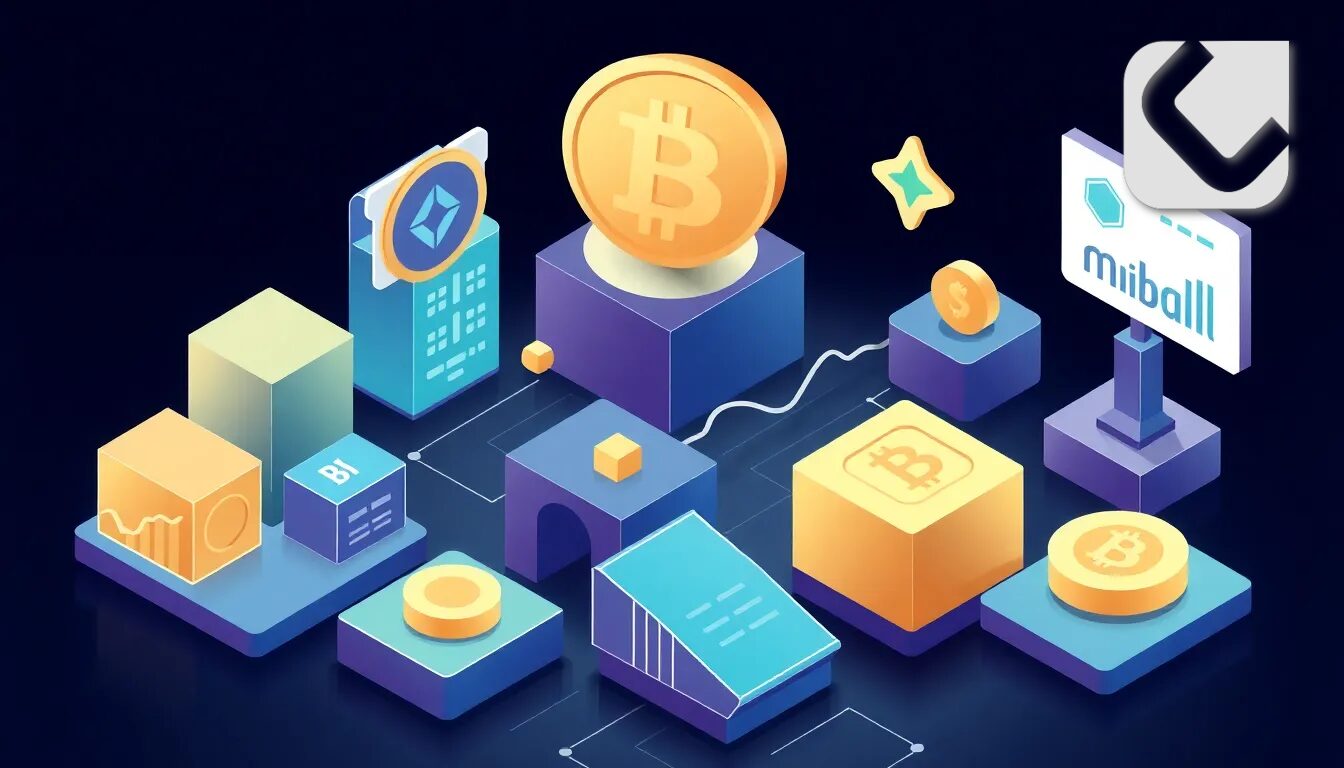From Fringe to Foundation: How Mainstream Blockchain and Tokenization Are Redefining Global Finance

From Fringe to Foundation: How Mainstream Blockchain and Tokenization Are Redefining Global Finance
In the summer of 2025, an African sovereign wealth fund quietly settled a $500 million infrastructure investment using tokenized government bonds issued on a blockchain platform—not as a proof of concept, but as a fully regulated, cross-border transaction. No fanfare, no crypto hype, just business as usual.
Meanwhile in Frankfurt, a leading European custodian joined forces with a decentralized finance (DeFi) protocol to launch a pilot tokenization program for real estate-backed securities. Less than a week later, the Monetary Authority of Singapore unveiled a public-private initiative to enable tokenized foreign exchange settlements between Asian and African central banks.
What do these stories have in common? They’re not about speculation—they’re about transformation. The long-promised future of decentralized finance isn’t coming. It has arrived. It’s called Mainstream Blockchain and Tokenization, and it’s reshaping the way institutions issue, move, and manage value across borders.
What is Mainstream Blockchain and Tokenization?
Let’s break it down. Mainstream Blockchain and Tokenization refers to the deployment of blockchain technologies by regulated financial institutions and governments to tokenize real-world assets (RWAs)—such as cash, bonds, stocks, real estate, or commodities—for use in compliant financial operations.
Unlike the 2017 crypto boom, where hype often outpaced substance, this movement focuses on bringing traditional finance (TradFi) onto blockchain rails without compromising on legal, regulatory, or operational standards. In other words, it’s not about memes—it’s about money, movement, and meaning.
So how does Mainstream Blockchain and Tokenization work in practice?
- Asset Originators (e.g. banks, governments, corporations) issue tokenized versions of physical or financial instruments.
- Smart Contracts define ownership rights, transfer rules, and compliance requirements.
- Distributed Ledger Technology (DLT) enables real-time, transparent settlement across jurisdictions.
- Custodians and regulators are integrated into the system to ensure legal enforceability and auditability.
Mainstream Blockchain and Tokenization Trends in 2025
The global transition toward tokenized economies is no longer speculative. Consider these 2025 statistics and events:
- Over $5 trillion in tokenized assets are projected to circulate on permissioned blockchains globally by Q4 2025.
- Tokenized bond issuances grew 300% year-on-year between 2023 and 2025, largely driven by EMDEs (Emerging Markets and Developing Economies).
- The European Blockchain Sandbox, an EU-led regulatory initiative, onboarded 32 tokenization use cases across capital markets, payments, and trade finance.
- In Africa, three central banks (including Ghana and Namibia) have completed pilot tokenization frameworks for local government securities.
From Switzerland’s Project Helvetia to the IMF’s push for tokenized cross-border payments, the writing is on the wall: institutions are not just embracing blockchain—they’re building on it.
Mainstream Blockchain and Tokenization Use Cases: From Talk to Transactions
1. Cross-Border Settlements
Traditional cross-border payments are a bureaucratic labyrinth—slow, expensive, and opaque. Tokenization streamlines this with programmable money and real-time settlement. For example, HSBC recently settled a $100 million FX transaction between Europe and Hong Kong using tokenized deposits across multiple ledgers—compressing T+2 settlement into mere seconds.
2. Bond Issuance and Secondary Markets
The World Bank’s tokenized green bonds issued via the Ethereum blockchain in 2024 have become a benchmark, shaving down issuance costs by 40% and enabling greater investor access. With tokenized bonds, the secondary market becomes instantly liquid, as transfers can be automated via smart contracts with compliance embedded.
3. Digital Escrow and Trade Finance
At PAA CAPITAL, our regulated digital escrow platform increasingly leverages blockchain to secure cross-border B2B transactions. By tokenizing escrow agreements, terms can be executed transparently and immutably, reducing fraud risk and arbitration costs in African-European trade corridors.
4. Real Estate and Asset Securitization
Luxury real estate in Cape Town and Lisbon is now being fractionalized and sold as security tokens to institutional investors. This democratizes access to illiquid, high-value assets while improving liquidity and compliance reporting via blockchain-generated audit trails.
Mainstream Blockchain and Tokenization Benefits
- Cost Efficiency: Reduced intermediaries and paperwork lead to savings in issuance, settlement, and custodial operations.
- Transparency: Immutable ledgers reduce fraud, improve auditability, and enhance investor confidence.
- Programmability: Smart contracts allow for automated compliance, interest payments, and KYC/AML triggers.
- 24/7 Market Access: Tokenized assets can be traded outside traditional market hours, supporting global liquidity.
Mainstream Blockchain and Tokenization Challenges and Compliance Requirements
Of course, with great power comes painstaking due diligence. Rolling out tokenized systems at scale introduces several hurdles:
Regulatory Ambiguity
Jurisdictions vary wildly in how they define and regulate tokenized assets. For instance, while the EU’s MiCA (Markets in Crypto Assets Regulation) provides a roadmap, many African regulators still lack formal guidance. As a fully licensed VASP and EMI across the Africa-Europe corridor, PAA CAPITAL works closely with regulators to bridge these gaps through sandbox participation and shared compliance frameworks.
Custody and Legal Finality
Who holds the private keys? What happens in case of insolvency or token loss? Institutional-grade custody solutions—often combining hardware security modules (HSMs) and insurance-backed third parties—are critical. Legal finality is another thorny issue, as property laws must adapt to token-based ownership rights.
Interoperability and Standards
With various blockchain platforms (Ethereum, Tezos, Hyperledger, etc.) in play, the lack of cross-chain interoperability can hinder market liquidity. Global standardization efforts (like ISO 20022 or the BIS Project Dunbar) seek to create common rails, but the journey remains bumpy.
Cybersecurity and Compliance Automation
Tokenized platforms must be hardened against cyber threats, insider misuse, and smart contract bugs. Moreover, compliance with AML/CFT, KYC, travel rule, and data privacy laws must be baked into the design, not bolted on.
Implementing Mainstream Blockchain and Tokenization: Best Practices
So, how can financial institutions, central banks, and corporates harness tokenization without ending up in regulatory quicksand?
- Conduct Jurisdictional Analysis: Map out legal and regulatory definitions of digital assets in every relevant country.
- Use Permissioned Blockchains: For institutional-grade deployment, permissioned or hybrid blockchains offer controlled access and better compliance integration.
- Integrate RegTech Tools: Leverage AI-driven KYC, eID verification, and real-time AML screening integrated directly into the token issuance and settlement layers.
- Partner with Licensed VASPs: Institutions like PAA CAPITAL offer turnkey access to tokenized escrow and cross-border rails with compliance baked in.
- Educate Stakeholders: From legal teams to IT departments, alignment is essential. Develop training programs and engage in forums like the African Fintech Council or Digital Euro Association.
The Future Outlook and Strategic Implications
By 2030, analysts predict that at least 10% of global GDP—roughly $10 trillion—will be stored and transacted via tokenized assets. But the path to maturity will be uneven, segmented by local regulatory timing, infrastructure gaps, and institutional inertia.
Still, the direction is clear. Tokenization is not a competitor to traditional finance—it is its inevitable evolution. For Africa-Europe corridors, where currency volatility, transaction risk, and capital access are daily challenges, tokenized assets offer a new frontier.
At PAA CAPITAL, we see this evolution not as a trend to chase, but a foundation to build upon. By integrating tokenized instruments into compliant financial infrastructure, we aim to deliver financial inclusion, operational efficiency, and resilient cross-border rails tailored for the future of finance.
Conclusion: From Disruption to Infrastructure
Mainstream Blockchain and Tokenization is no longer a fringe curiosity—it’s becoming the backbone of next-generation finance. Whether you’re a central bank designing a CBDC, a fund manager exploring tokenized treasuries, or an African SME looking for safer cross-border settlement routes, the shift is here.
But success isn’t guaranteed. Navigating this space requires more than tech—it demands regulatory intelligence, risk foresight, and trusted partners. Done right, tokenization can unlock liquidity, enhance compliance, and bridge the financial inequalities that plague emerging markets.
The time to act isn’t five years from now. It’s now. Because when the future becomes infrastructure, those still sitting on the sidelines may find themselves locked out of the game entirely.
Looking to implement compliant and cross-border tokenization strategies? PAA CAPITAL can help.


